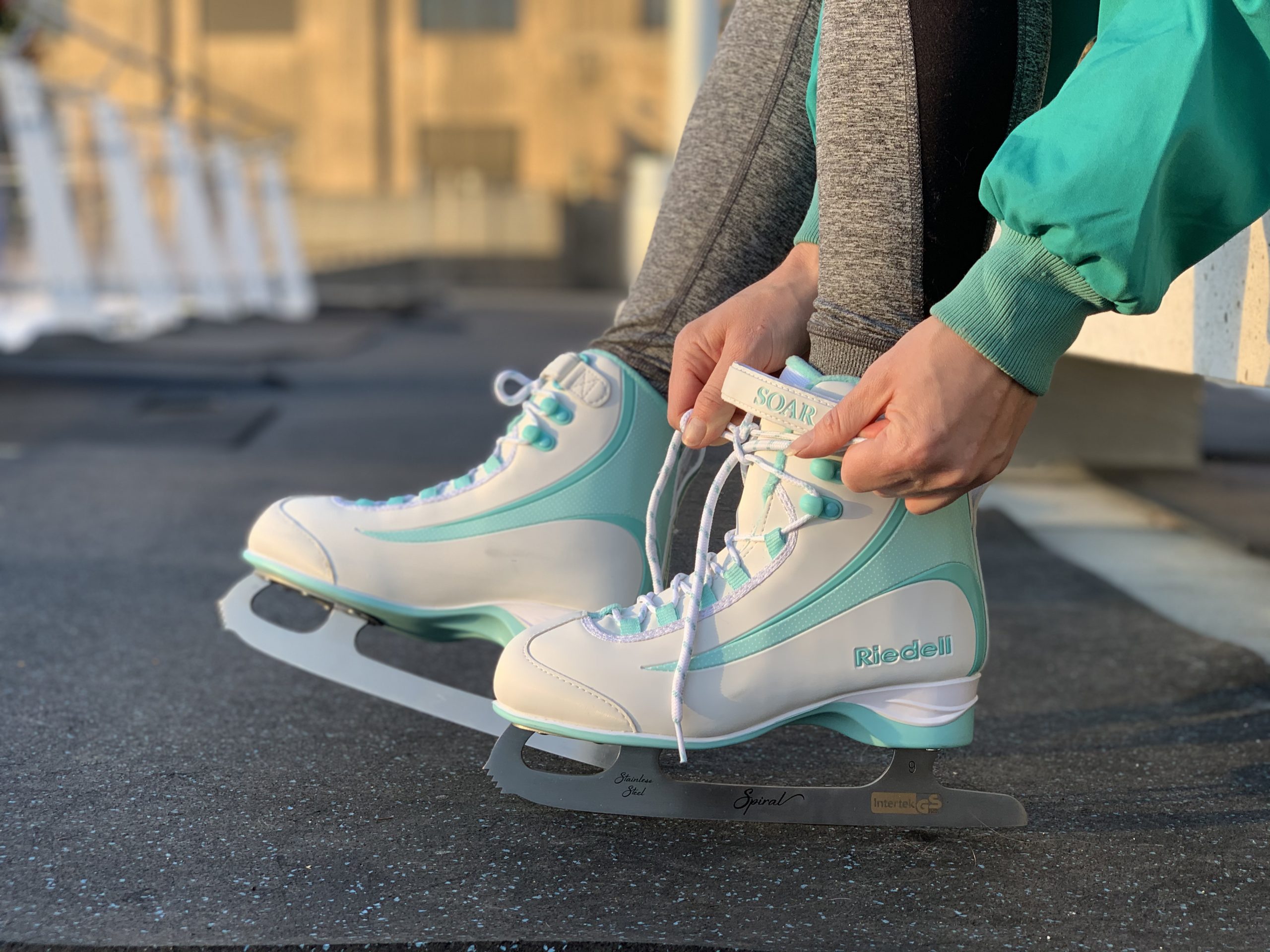Techniques and Tips for the Casual Ice Skater in 2022

Ice skating is a relaxing yet exciting way to spend your free time. And while there are elements of ice skating that you can carry over from hobbies like rollerblading, most ice-skating techniques are unique to the practice.
For hobbyists who want to improve their skating but aren’t looking to perform a double Lutz in a competition any time soon, this post will help you understand the basics. Stick around to learn some tips and techniques for casual ice skaters.
Practical Ice-Skating Guide: Before You Get Started
Let’s start with the practical tips for preparing yourself to start your day of ice skating. These are simple, but vital for ensuring a safe and enjoyable outing.
Clothing
Dress according to the weather and be mindful of the wind chill. Make sure you’re wrapped up in a scarf, gloves, a nice cap, warm pants, and a cozy coat. Even if you are going to an indoor ice rink, it will be significantly colder than it is outside (depending on where you live…). While you don’t want to overdress and potentially ruin your experience, it’s hard to have fun when you’re shivering.
Boot Sizes & Tying Laces
Using the right size boot and adequately tying your laces is about more than your comfort – it’s about your safety on the ice. Do ice skates run true to size? It’s not likely your street shoe size will equate to your boot size. Your size specs will depend on the manufacturer and model. The right boot size will provide a good blend of comfort and support to all parts of the foot.
Tighten your laces starting with those in the first eyelet near your toes. As you work your way up, make sure you maintain consistent tension. Riedell Ice recommends tight laces but not to the point of pinching. See our fitting guide for more on boot and lacing.
At the Rink & Getting Started
Rules of the Rink
Pay attention to the rules of the rink, which should be posted throughout the facility or park. Some parks will vary in ice skater etiquette. You’ll want to pay the most attention to the skating direction (clockwise, counterclockwise) of the rink to avoid collisions.
The Mental Stuff
Ice skating can be nerve-wracking for the casual skater, especially when skating in front of strangers. Try the following:
- Don’t be afraid of falling – Everyone falls, even experienced skaters. Consider wearing a helmet or wrist guards for extra protection.
- Try to maintain consistent breathing – This is always vital when ice skating and it’s easy to forget.
- Have a good time – Maybe this is easier said than done, but casual ice skating isn’t about grinding away at competition-level drills. It’s about getting out and enjoying the ice.
Basic Ice-Skating Techniques & Fundamentals
Body Position
As you begin skating, you’ll naturally want to put your weight forwards. Avoid this as much as possible. Try to maintain a good balance. Bend your knees, stay upright, and always look straight ahead. Looking down can mess with your coordination and general skating direction.
Inside & Outside Edges
You may see these terms as you do your ice-skating research. Inside and outside edges are in reference to the areas inside and outside your blades. Your inside edge is on the inside of your legs between the blades, and your outside edge is on the other side of each leg and blade.
How to Start Gliding
There’s a temptation to ice skate as if you were rollerblading or roller skating. These are not quite the same. When skating, you’ll want to start with your weight leaning toward the left leg while pushing off from the whole length of the blade at the inside edge of your right foot, remembering to maintain a consistent center of gravity as you glide forward. After pushing forward from the inside edge of your right skate, you’ll glide forward with your weight on the left leg until you bring your right foot parallel once again and regain weight balance.
Switching to the Left Skate
Then you’ll adjust your shoulders so that your weight leans more over your right leg, pushing out from the inside edge of the left skate just as you’d done before on the other side. Allow yourself to glide a bit before regaining the parallel balance.
Stopping on Ice Skates
Beginners will likely want to use what’s called the “snowplow stop.” Put your open arms slightly in front of your body and below your shoulders for an even balance, then bend your knees, and push your feet into a V position until you come to a stop.
It’s possible to do the snowplow stop with one or two feet, depending on where you’re putting your weight. The snowplow stop is the easiest form of stopping on ice skates, but it may still take several tries to master.
75 Years of Engineering Quality Ice Skates
Riedell Ice manufactures ice skates for casual and competitive skaters alike. We’re proud to supply dealers all over the world with our quality boots and blades. Find a local dealer near you or check out our casual series catalog.
